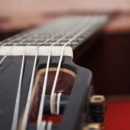 |
Logic behind flats and sharps in musical scales
When you learn the traditional western music notation in order to be able to play an instrument, one of the first things you learn is the (...)
October 28, 2016 – Jakub Marian – Music
|
 |
The “432 Hz vs. 440 Hz” conspiracy theory
Would you believe that there is a conspiracy theory about the way we tune musical instruments? And that this theory even involves the (...)
October 19, 2016 – Jakub Marian – Music
|
 |
Meaning of accidentals and key signatures in terms of tonal distance
In the previous article, we learned how we can translate note names into numbers using the following table: (...)
March 27, 2014 – Jakub Marian – Music
|
 |
How to translate chord progressions into any scale easily
In the previous article, we learned that it is possible to avoid memorization in music theory by using numbers instead of letters for note naming. We used the following table: (...)
March 23, 2014 – Jakub Marian – Music
|
 |
Harmony analysis using numbers (the numeral notation)
In the previous article, we described a way to think about the notes in the western tonal system as about a line of fifth. This line also provides another natural approach to note naming; we can simply call one of the notes 0 and refer to all other notes by their tonal distance (the distance on the line of fifths) (...)
March 10, 2014 – Jakub Marian – Music
|
By the way, have you already seen my brand new web app for non-native speakers of English? It's based on reading texts and learning by having all meanings, pronunciations, grammar forms etc. easily accessible. It looks like this:
 |
Functional (unified) notation for chord progressions
The functional notation for chord progressions is an extension of the traditional notation which is fully compatible with it (you won’t have to learn any new symbols if all you want to do is to play a given chord progression on an instrument). It is a notation I have developed in order to speed up the process of learning to understand music and to improvise. (...)
March 2, 2014 – Jakub Marian – Music
|
 |
Pythagorean tuning
Pythagoras devised a tuning system based solely on perfect fifths, constructed from a reference tone by successively stacking perfect (...)
February 27, 2014 – Jakub Marian – Music
|
 |
Translating harmonic progressions into chord names easily
Since I have written a post on quick interval naming, the name of this post may suggest some redundancy. However, in this post, we shall (...)
January 24, 2013 – Jakub Marian – Music
|
A small but necessary interruption: This website does not contain any ads and is completely dependent on the support of its readers. If you enjoy reading articles here, please, consider helping by using my web app for English learners.
 |
How to quickly form any interval from any note
Using the traditional approach, if you want to be able to quickly name any interval from any note, you basically have to memorize them (...)
November 19, 2012 – Jakub Marian – Music
|
 |
Major third guitar tuning
When I wanted to start to play jazz on the guitar (after many years of playing only classical music), I was disgusted by how many things I (...)
July 17, 2012 – Jakub Marian – Music
|

